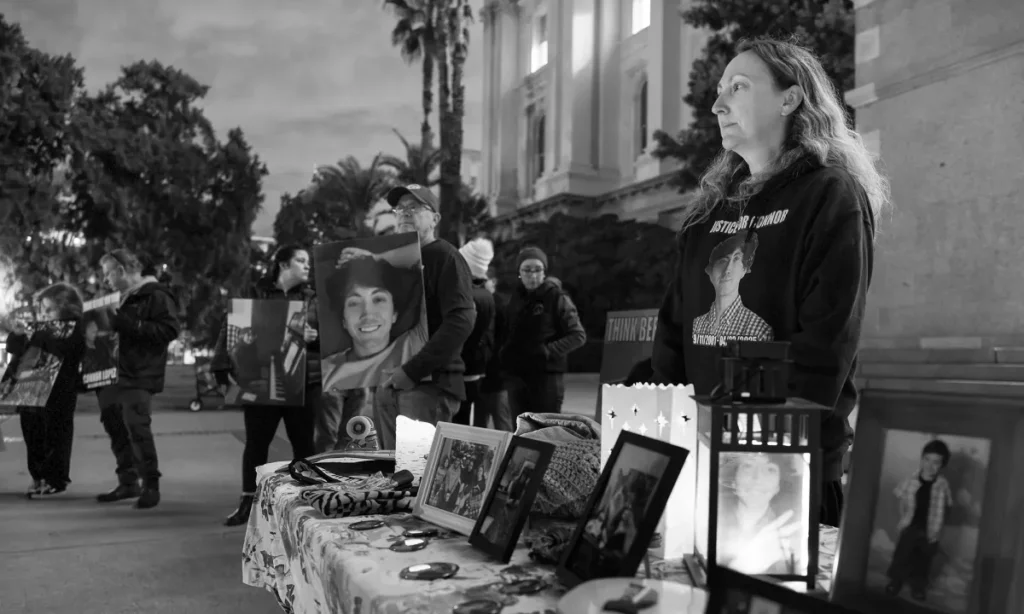Vice President Kamala Harris, the Democratic presidential nominee, takes the stage for a rally in Wilkes-Barre, Pa., on Friday, Sept. 13, 2024. Groups backing Harris have reserved $332 million worth of airtime. Just about $194 million in ads will come from groups backing former President Donald Trump. (Kenny Holston/The New York Times)

- Democrats are spending $332M on ads; Trump allies have reserved $194M, with major spending in swing states.
- Harris’ campaign and allies are outspending Trump’s on ads, with significant investments in Pennsylvania and Michigan.
- Republicans lag in ad reservations but may quickly adjust if major donors contribute.
Share
|
Getting your Trinity Audio player ready...
|
The presidential candidates and their allies plan to spend more than $500 million on television and radio advertising over the final seven weeks of the campaign.
Groups backing Vice President Kamala Harris have reserved $332 million worth of airtime for television and radio ads — 63% of the total — while just about $194 million will come from groups backing former President Donald Trump, according to data supplied by AdImpact, an advertising tracking firm.
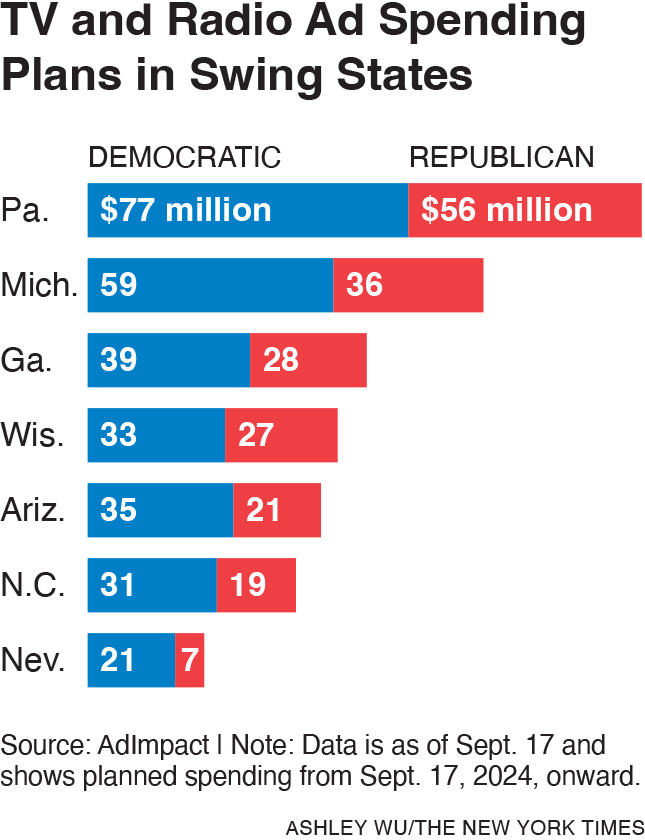
The Fundraising Wars of the 2024 Election
The ad wars are the consequence of the fundraising wars: Democrats have significantly outraised Republicans in the months after Harris succeeded President Joe Biden as the head of the Democratic ticket, and Harris has more money to spend on paid media.
Related Story: Musk Deletes Post About Harris and Biden Assassination After Widespread ...
Harris’ campaign has portrayed her as the underdog and often points to the existence of several outside Republican groups to argue that Democratic donors should not be complacent. But the biggest spender by far in the campaign is Future Forward, the main super political action committee blessed by the Harris campaign, which is scheduled to spend $186 million on television and radio over the final 49 days.
The Harris campaign itself is spending more than the Trump campaign in the remaining weeks of the election. Harris is set to air about $109 million in advertisements, while Trump will air about $98 million worth.
The state where the candidates and their allies plan to spend the most money on advertising is Pennsylvania: $133 million in all. Democrats have about a $21 million advantage in the state.
The next noisiest state will be Michigan, where about $95 million will be spent on television and Democrats have a $23 million advantage. Democrats have $6 million to $15 million advantages in four big battleground states — Arizona, Nevada, North Carolina and Wisconsin — as well as Nebraska, which is home to a single congressional district that is competitive at the presidential level. Republicans have no advertising reserved in Nebraska, while Democrats have nearly $6 million booked there through Election Day. Democrats are also set to run small amounts of ads in New Hampshire, Minnesota and Maine, which Republicans are almost entirely ignoring.
Related Story: Presidential Debate Made Clear Harris Will Help Californians Reach the Middle ...
Democrats and Republicans Fight for Battleground States
But by and large, Democrats and Republicans seem to agree about which states are the most important relative to one another: About 29% of Republicans’ reservations for advertising airtime are in Pennsylvania, while 23% of Democratic dollars are headed there. In the other battleground states, the proportion of money that each party is spending is similar.
The pro-Trump outside groups have been slower to reserve advertising time, with some buying relatively last-minute ads that can be much more expensive than the reservations made further in advance. The three main pro-Trump outside groups — MAGA Inc., Preserve America PAC and Right for America PAC — have reserved a combined $95 million over that period, less than half the amount reserved by Democratic outside groups.
Still, the sums reserved by Republicans could change quickly given that several groups are heavily financed by single billionaire donors, such as Miriam Adelson and Timothy Mellon, meaning that a super PAC could quickly secure and spend significant money if one donor is persuaded to write a check.
Related Story: Overseas Threats Hit the Ohio City Where Trump and Vance Lies Slandered ...
There is a limit, of course, to what all that money can buy. Some states and markets are more expensive than others. Plus, outside groups are charged more for their ads than campaigns, making the advantage that Democrats have with their super PACs less significant when it comes to what voters actually see.
For instance, Democrats are spending almost twice as much in the Raleigh-Durham market as Republicans on television. But Republicans actually are set to broadcast a higher number of “Gross Rating Points,” a typical measure of television advertising firepower, in that market. That’s because most of the Democratic spending there is coming from a super PAC, while all the Republican spending there is coming from the Trump campaign. The same is true in other North Carolina markets like Charlotte and Wilmington.
The total spending figures do not include campaign or super PAC spending on Meta or Google, which owns YouTube. Those digital platforms do not share data publicly on future reservations, but Democrats have outspent Republicans there considerably in the past.
–
This article originally appeared in The New York Times.
By Theodore Schleifer/Kenny Holston
c. 2024 The New York Times Company
RELATED TOPICS:
Categories
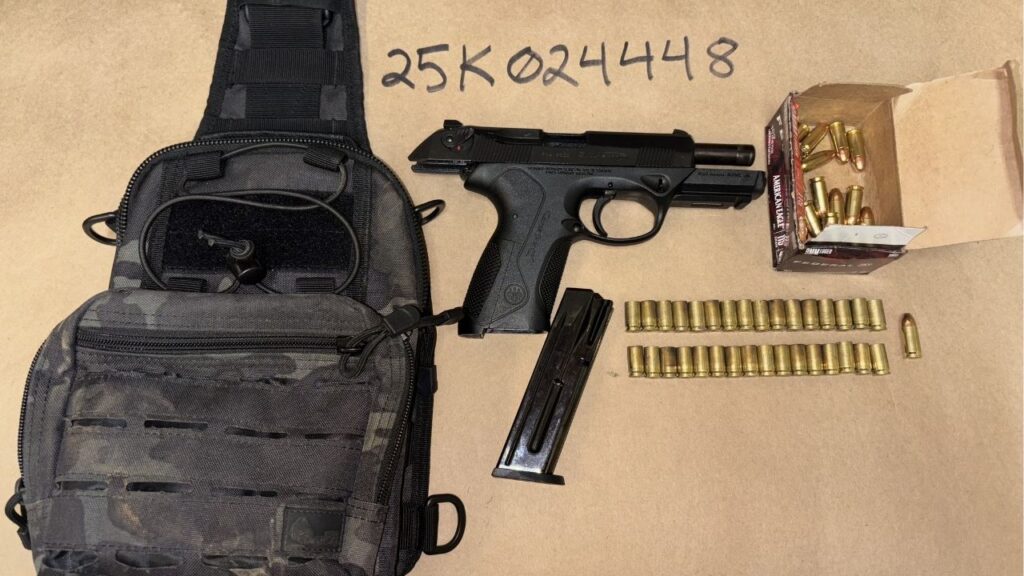
Gunfire Reports Lead to Felon’s Arrest in Kings County
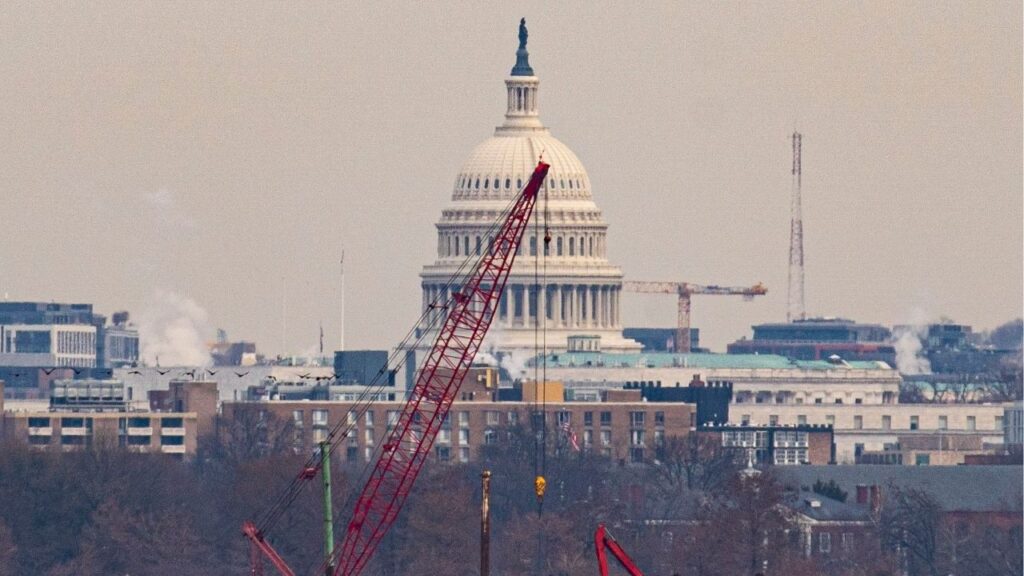
US Government Admits Liability in Deadly DC-Area Air Collision
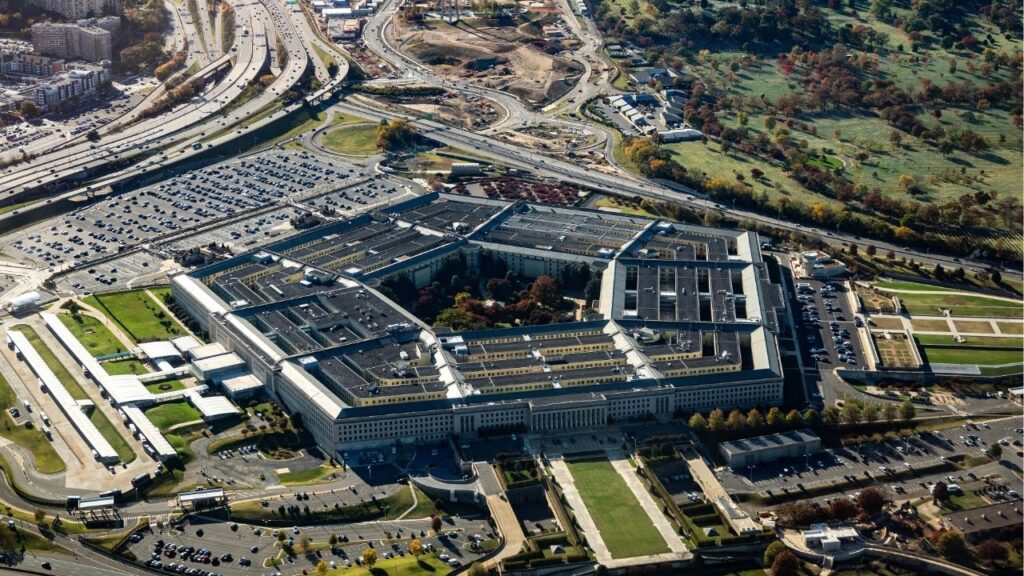
US Military Announces 4 Killed in 26th Boat Strike








